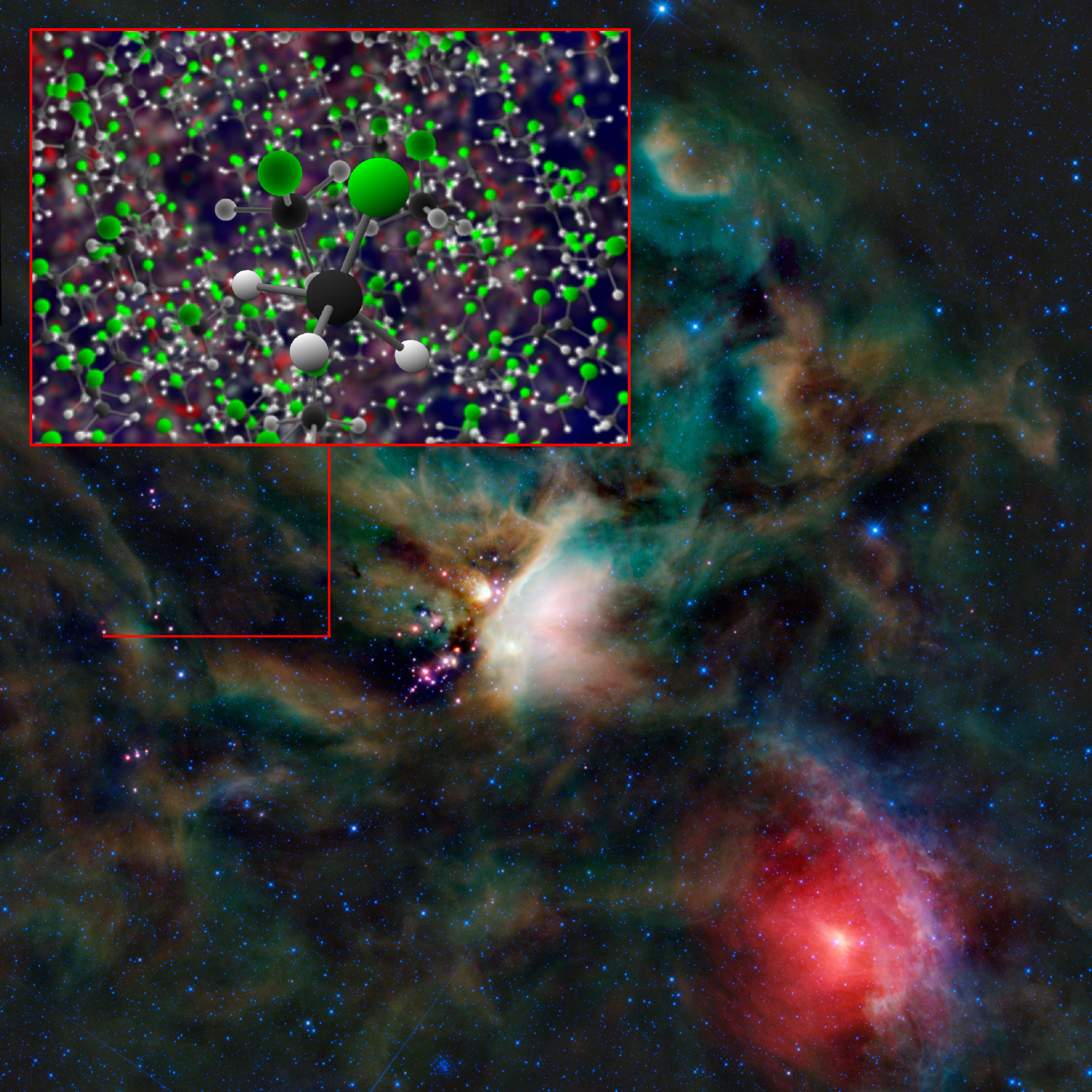Compound Associated With Life Found in Two Very Different Locations in Space
Credit to Author: Becky Ferreira| Date: Mon, 02 Oct 2017 15:13:03 +0000
Searching for alien life in the vast expanse of the universe is somewhat comparable to tracking animals here on Earth. Astronomical observatories scan the depths of space for compounds associated with life (called “biomarkers”), much like wildlife experts read tracks and markings. But while a footprint is a relatively clear calling card of a living creature, biomarker compounds like oxygen, methane, or hydrocarbons could be produced either by life, or by abiotic processes.
Astronomers have suggested that chloromethane (CH3Cl), an organohalogen compound known as Freon-40, could be a potentially valuable biomarker in the search for extraterrestrial life. On Earth, chloromethane is emitted by tropical plants, plankton, and peat bog ecosystems, and detection of this compound on Mars by the Viking and Curiosity missions ignited years of unresolved debate about whether the samples were biological or geological in origin.
Research published Monday in Nature Astronomy adds a new twist to this astrobiological saga with the detection of chloromethane in two very different extraterrestrial environments: the atmosphere of a comet in our solar system, and an infant star system 400 light years away. This doesn’t mean that life exists at these locations, and in fact, the finding dashes the hopes of some scientists who regarded Freon-40 as a relatively solid indicator of biological activity.
Led by Edith Fayolle, a postdoctoral fellow at the Harvard-Smithsonian Center for Astrophysics, researchers detected chloromethane in the atmosphere of comet 67P/Churyumov–Gerasimenko, using data collected by the Rosetta Orbiter Spectrometer for Ion and Neutral Analysis (ROSINA) instrument aboard the European Rosetta spacecraft. Rosetta orbited the comet two years before a planned crash in September 2016.

Fayolle’s team also found that chloromethane is present in a baby star system called IRAS 16293-2422 using observations from the Atacama Large Millimeter/submillimeter Array (ALMA) in Chile. This marks the first detection of stable chloromethane, or any of its wider family of organohalogen compounds, in interstellar space.
Read More: Three Potentially Habitable Planets Have Been Found in Our Cosmic Backyard
“Finding organohalogens near these young, Sun-like stars was surprising,” Fayolle said in a statement. “It’s clear now that these molecules form readily in stellar nurseries, providing insights into the chemical evolution of solar systems, including our own.”
It might seem like a boon for alien hunters, but it actually means that chloromethane can be produced in high concentrations abiotically. However, the research could help contextualize how life sprang up on Earth 4.5 billion years ago, perhaps with the help of organohalogens seeded by our own Sun when it was a baby, or by comets colliding with Earth.
“Our results show that we still have more to learn about the formation of organohalogens,” said Fayolle. “Additional searches for organohalogens around other protostars and comets need to be undertaken to help find the answer.”
Get six of our favorite Motherboard stories every day by signing up for our newsletter.